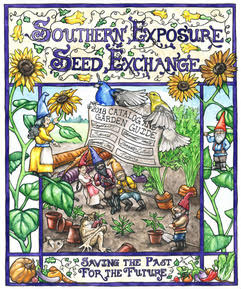Review: BLUETS by Maggie Nelson

Centaura cyanus
Not Maggie Nelson
Planted March 3rd
Southern Exposure Seed Exchange
Transplanting not recommended
Review by SELMS
I don’t read much memoir (people generally bore me), so I was late to reading Maggie Nelson’s Bluets. There is much that can be said about this book, and so much has already been said, that I am only going to concern myself with p90 on which Nelson states, “Recently, I found out that “les bluets” can translate as ‘cornflowers’…I had only ever heard, ‘a small blue flower with a yellow center that grows in abundance in the countryside in France.’ ” The problem with this is that colloquial names for plants are utterly useless. Is she thinking of Centaura cyanus, also called cornflowers or bachelor’s button, native to Europe? They are blue, but the centers are not yellow. Is she thinking of Houstonia caerulea, native to North America, not France, but sometimes called azure bluets or Quaker’s lady? In such a heavily researched book, you’d think there’d be some indication or some research into a blue plant aside from woad (which as it happens is a yellow flower, despite producing a blue dye).
In any case, seeing as there was a dearth of bluets in Bluets, I planted some Centaura cyanus by Southern Exposure Seed Exchange on March 3rd. The seeds were as described, “feathery, badminton birdie shaped,” which was surprising and delightful. It took about 7 days before one of the seedlings sprouted, but so far there is only one. Alas, I went against the directions and did not direct sow; they are in a cowpot with the other seedlings. Oof. And I just realized it says specifically that “transplanting is not recommended.” The seven days was as predicted by Southern Seed Exchange, (“days to emerge 7-14), and I hope within the 14 to have more, but I may have to move the pot to a sunnier location. All in all I’m happy with one sprout fighting to come up when planted in the incorrect environment without the appropriate amount of sun. Would buy again.
June update: After a failed attempt at container growing, I direct sowed several seeds in an area of the garden I call “the orphanage,” a place where the soil is never amended and plants I am tired of tending are transplanted to, where they must fend for themselves in the red clay without intervention or encouragement. The seeds had a great germination rate and have now bloomed: a handful of frilly blue buttons. Alas. The Alabama heat is not their friend. Their foliage is often wilted, their stalks cannot even hold up the paltry weight of the flowers, and half of them have dripped onto the ground like jagged blue tears.
Would plant again, but in another climate.